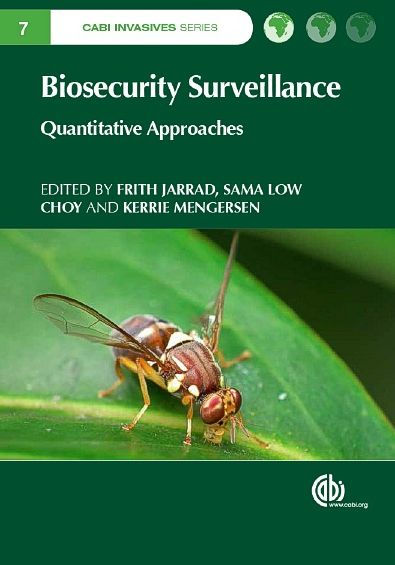Biosecurity Surveillance: Quantitative Approaches
Biosecurity Surveillance provides the foundation and concepts behind surveillance design, with examples of methods and tools created to deal with surveillance challenges.
It includes supporting case studies and current directions in research and it covers evidence-based approaches to surveillance, statistics, detectability, single and multi-species detection, risk assessment, diagnostics, data-basing, modeling of invasion and spread, optimization, and future climate challenges.
"1120742831"
It includes supporting case studies and current directions in research and it covers evidence-based approaches to surveillance, statistics, detectability, single and multi-species detection, risk assessment, diagnostics, data-basing, modeling of invasion and spread, optimization, and future climate challenges.
Biosecurity Surveillance: Quantitative Approaches
Biosecurity Surveillance provides the foundation and concepts behind surveillance design, with examples of methods and tools created to deal with surveillance challenges.
It includes supporting case studies and current directions in research and it covers evidence-based approaches to surveillance, statistics, detectability, single and multi-species detection, risk assessment, diagnostics, data-basing, modeling of invasion and spread, optimization, and future climate challenges.
It includes supporting case studies and current directions in research and it covers evidence-based approaches to surveillance, statistics, detectability, single and multi-species detection, risk assessment, diagnostics, data-basing, modeling of invasion and spread, optimization, and future climate challenges.
73.9
In Stock
5
1

Biosecurity Surveillance: Quantitative Approaches
386
Biosecurity Surveillance: Quantitative Approaches
386
73.9
In Stock

Product Details
| ISBN-13: | 9781780643595 |
|---|---|
| Publisher: | CABI |
| Publication date: | 04/20/2015 |
| Series: | CABI Invasives Series , #6 |
| Pages: | 386 |
| Product dimensions: | 7.00(w) x 9.70(h) x 1.20(d) |
About the Author
From the B&N Reads Blog
